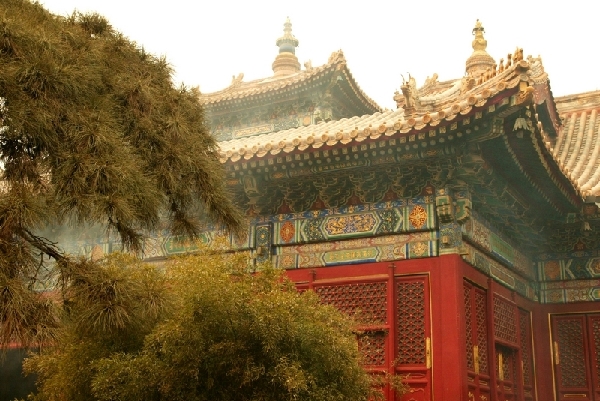

Passing through Zhaotai Gate visitor will enter the second yard which contains a drum tower on the western side and a bell tower on the eastern side, and in front of these towers are two octagonal stele pavilions. Words by Emperor Qianlong were carved in the stele explaining the traditional and historical reasons that dwellings formerly used by imperial family members must later be changed to temples.
Yonghe Gate, originally the main entrance to the Lamasery, is now called Devaraja Hall (Hall of the Heavenly Kings), as there are the statues of four very powerful heavenly kings located on both sides of the inner palace walls. The northern heavenly king on the eastern side holds a snake and treasures; the southern king on the eastern side holds an umbrella and a silver mouse; the southern one on the western side holds a sword and the northern one on the western side holds a pipa (a musical instrument used in ancient China). Located in the centre of the palace is a smiling Maitreya.
On departing Devaraja Hall visitor will immediately observe an ancient copper cooking vessel made in 1747 during the Qing Dynasty. This vessel, which appears to be black with white marble stone as its seat, has high artistic value and is among “the three rarest things in Beijing”. Six doors are inset into the upper part of the vessel, with two dragons playing with a ball cast on the doors, and there are three lions playing with a ball engraved on the seat. On the northern side of the vessel is the Great Stele Pavilion with the doors open on each of its four sides. Words by Emperor Qianlong of Qing in the stele inform of the origin and meaning of Lamaism. To the north of this pavilion is an odd-shaped hill called Xuyu Hill, a sacred place of rich religious meaning which was built in the middle of a pool, and represents a place to which all Buddhists are eager to go.